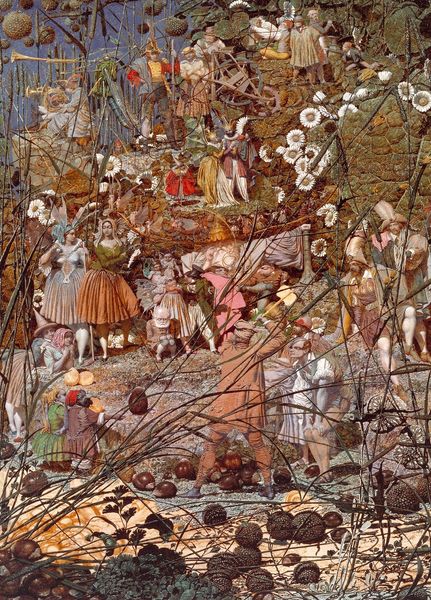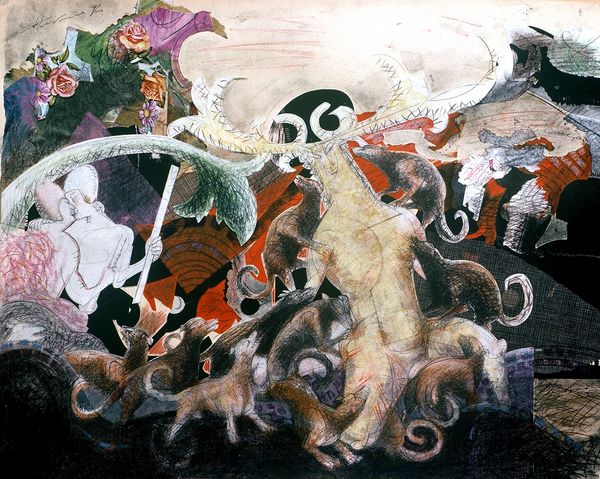
painting, oil-paint
#
tree
#
organic
#
painting
#
oil-paint
#
landscape
#
oil painting
#
forest
#
plant
#
realism
Copyright: Kateryna Bilokur,Fair Use
Curator: This oil painting, realized in 1950, is titled "Everything goes, everything passes", created by the Ukrainian artist Kateryna Bilokur. What are your first thoughts? Editor: Immediately, I feel an incredible sense of transience looking at the image of the aged stumps. The oil on canvas gives this landscape a very grounded feeling as well. Curator: Bilokur painted during a very turbulent period in Ukraine’s history under Stalin. It’s easy to imagine how the painting serves as commentary of the cyclical nature of destruction and rebirth in both natural and political landscapes. Her choice of focus here--these expiring stumps with a young birch growing in the background-- speaks to her unique brand of realism. Editor: That contextualization is critical. Examining her biography, one cannot separate Bilokur’s paintings from the struggles faced by women artists and creatives coming from marginalized nations. But what strikes me as fascinating is the role of art to document this destruction in a specific style of realism Curator: Realism, in the sense that her landscapes are very true-to-life. Though formally self-taught, her skill, her meticulous details - as you can see in the play of shadow in the stumps or texture of the leaves - captures light in ways reminiscent of classical works. Her lack of formal artistic training allowed her, though, to develop a truly individual style. Editor: I wonder how her style of work resonated in the context of post-war realism painting as well. Was her style and background respected in the formal art world in her nation? What critical acclaim did she garner for her style? It offers a strong contrast with what we traditionally view when we picture the male-dominated "Stalinist Realism" era. Curator: Bilokur was honored in the Soviet Union. However, there has always been something to be said for the subversive nature of simply continuing to depict life, beauty, and growth amidst devastation. "Everything goes, everything passes" reminds us that change, both destruction and growth, are constant, both in art and in history. Editor: Looking closer I also think that this perspective allows me to be hopeful and that there are constant spaces to regrow within contexts of trauma and devastation. Thank you for that perspective.
Comments
No comments
Be the first to comment and join the conversation on the ultimate creative platform.













